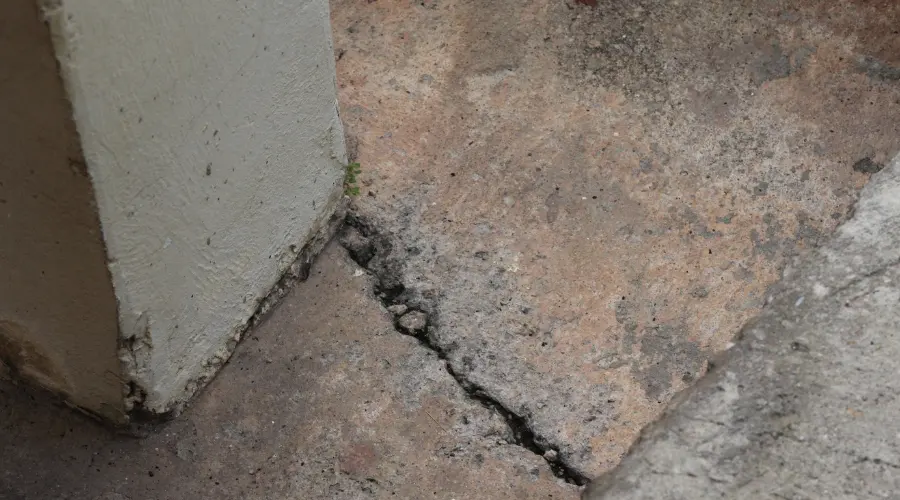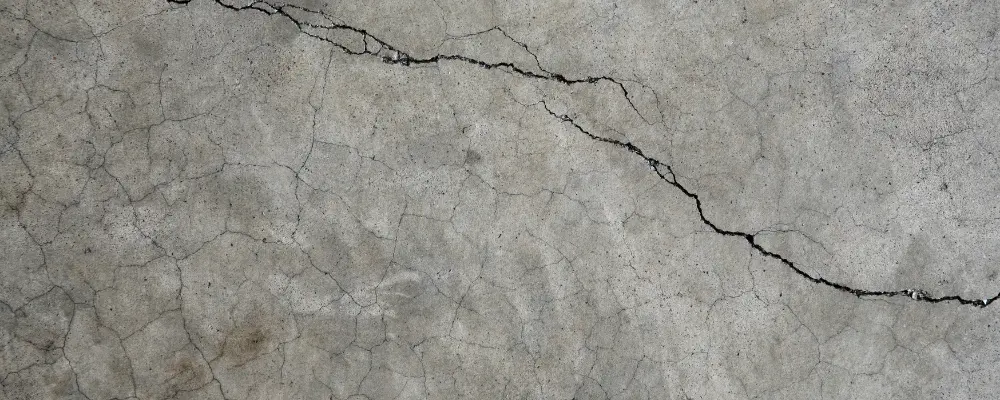Foundation cracks are usually a nightmare for house and commercial building owners who tend to doubt the structure’s safety and integrity when they observe such damage. If these cracks are left unattended, it is very possible that they can cause extensive harm, which may in turn affect the load-bearing capacity and lead to structural decay.
Foundation repair is a professional work that necessitates expert knowledge to identify problems and to select the most suitable repair method. In this guide, the question of how, why, and how much foundation crack repair costs is thoroughly investigated, providing essential information that homeowners need to know to prolong the lifespan of their property’s foundation.
What Causes Foundation Cracks?
Foundation cracks can occur for various reasons, most commonly due to environmental or defects in construction.
- Soil Movement:This refers to the displacement or change in the ground beneath the foundation, which can alter the load distribution on the concrete structure, often resulting in cracks.
- Hydrostatic Pressure: The accumulation of water around the base of the building, particularly caused by poorly installed drainage systems, is the primary reason for the application of force to the wall, which in turn results in foundation cracks.
- Poor Construction Practices: Using the wrong materials, neglecting the curing process for concrete during construction, insufficient reinforcement, and improper curing of concrete at the time of construction can all be factors leading to structural cracks and foundation problems.
- Tree Roots: The roots of nearby trees can damage the earth and cause the foundation to shift or even topple, leading to cracks.
- Thermal Expansion: Temperature variations cause the materials of the base to alter their volume, either increasing or decreasing, resulting in cracks within the material.
- Overloading: Placing too much weight on or with improper load distribution on the foundation can cause the foundation to crack due to stress.
- Soil Composition: Expansive soils, like clay, absorb water and swell, then shrink when they dry out. This repeated swelling and shrinking puts stress on the foundation, often leading to cracks.
Types of Foundation Cracks
There are numerous types of foundation cracks, and each one of those poses a different level of concern for the foundation’s stability.
1. Vertical Cracks
These cracks are often due to natural foundation settlement or concrete shrinkage. They usually appear shortly after construction and are generally not structurally severe, but should be monitored for widening or water intrusion.
2. Horizontal Cracks
These occur due to excessive lateral pressure from soil or water against foundation walls. They are serious and may suggest structural compromise, often requiring reinforcement or wall replacement.
3. Diagonal Cracks
These are typically found at the edges of windows and doors and are the result of the foundation sinking or shifting. They occur when the building is not level, and some steps should be taken to rectify the issue.
4. Stair-Step Cracks
One of the most common and prone to brick masonry type cracks is the stair-step crack, which resembles the stacking of bricks. This indicates that differential settling is one of the factors contributing to the cracks; therefore, repair is of utmost importance to prevent future structural damage.
Signs You Need Foundation Crack Repair

Major signs that you need foundation crack repair are the following,
- Observable Cracks: Cracks on the foundation, walls, or floors are the first indications of a problem. Even small cracks, particularly those wider than 1/8 inch, could be a revealing sign of the foundation shifting or settling on which the house stands.
- Doors and Windows Sticking: If you experience sticky doors or windows, meaning they no longer close properly, it indicates that the foundations have settled or shifted, and as a result, the door frames and window openings have deviated from their original positions.
- Sloping Unglued Floors: Uneven or sloping floors, especially when tiles or floorboards become loose or unglued, often indicate that the foundation has shifted or settled unevenly. This can result from soil movement, poor compaction, or differential settlement beneath the structure. Such unevenness can lead to noticeable discomfort when walking, cause furniture to slide or tilt, and may be an early sign of deeper structural issues.
- Water Seepage: When water seeps into the basement foundation or crawl space, it is unmistakable evidence that cracks exist in the foundation, which enables the water to pass through. That will not only cause dampness but might create pressure, leading to the partial or complete collapse of the foundation.
- Wall Bowing or Tilting: Curved or slanted foundation walls are signs of considerable outside force. Immediate actions have to be taken to prevent them from collapsing completely when treated badly.
Methods of Foundation Crack Repair
Here you can find some of the latest technologies used by professionals in crack repair.
- Epoxy Injection
Used to repair structural cracks in concrete, epoxy resin is injected under pressure to restore the original strength and integrity of the structure. It is not ideal for wet or leaking cracks, but it is excellent for dry, dormant cracks.
- Polyurethane Injection
Polyurethane Injection: A flexible, expanding foam used to seal leaking, non-structural cracks, particularly in basements. It reacts with moisture and expands to fill voids, stopping water ingress without structural reinforcement.
- Carbon Fiber Reinforcement
This method is used for deeper cracks, in general, those in the basement walls or bows caused by different reasons, and then we will need carbon fiber straps to reinforce and stabilize the affected areas. It involves no digging and is a guaranteed non-invasive method to provide a long-lasting solution.
- Piering
To fix the foundation that has sunk below the ground, the technicians are meant to push the steel piers deep into the soil, thereby stabilising them and finally lifting them back to their original level. Such a method is widely used to correct a seriously leaning or moving foundation.
- Underpinning
A structural reinforcement method that strengthens an existing foundation by extending it deeper into stable soil layers, often using concrete or piles. It is commonly used when the original foundation is inadequate or weakened by soil erosion or excavation nearby.
Preventing Future Foundation Damage
Preventing future foundation damage is better achieved through an approach that considers both the outside environment and long-term maintenance efforts.
- Drains: The water must be directed away from the foundation by using gutters, downspouts, and ensuring the proper grade so that the water does not pool around the foundation.
- Soil Stabilisation: Compaction or soil-stiffening agents can efficiently guard against soil movements or settlements below the foundation.
- Frequent Soil Examination: Be vigilant for signs of expansion, erosion, or uneven settling in the ground around the foundation, as these may indicate more serious issues that require prompt attention.
- The Distance Between the Tree Roots and the Foundation: Trees should be planted at a safe distance from the foundation so the roots cannot enter the building and displace the soil.
- Monitoring of Structural Movement: Early signs of foundation damage, such as cracks and uneven floors, should be identified during regular inspections.
- Standard for Construction and Renovation: Always ensure that construction and renovation activities are conducted in accordance with professional standards to maintain the structural integrity of a building.
Cost of Foundation Crack Repair
| Repair Method | Estimated Cost (INR) |
| Minor Vertical Cracks | ₹10,000 – ₹20,000 |
| Horizontal/Diagonal Cracks | ₹20,000 – ₹50,000 |
| Injection Methods | ₹15,000 – ₹30,000 |
| Underpinning or Piering | ₹50,000 – ₹1,50,000+ |
Conclusion
Foundation cracks, if left unaddressed, can compromise the structural integrity of a building and make it unsafe for use. Early detection and accurate identification of the crack type and its root cause are essential steps in preventing further deterioration.
Regular structural inspections serve as a proactive measure to catch potential issues before they escalate. While the cost of repairs may vary depending on severity and method, ensuring safety should always be the priority. Engaging qualified professionals for assessment and repair not only guarantees effective resolution but also helps maintain the long-term stability of your home’s foundation.

